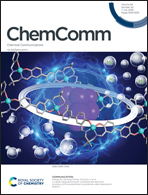Forensic analysis by solid sampling electrothermal vaporization coupled to inductively coupled plasma optical emission spectrometry
Abstract
To analyze trace evidence found at crime scenes, non-destructive analysis techniques or analysis techniques requiring minute amounts of sample are preferred. One such technique is solid sampling electrothermal vaporization (ETV) coupled to inductively coupled plasma optical emission spectrometry (ICPOES), which requires only 0.1–5 mg of sample. As a result, it has been utilized in several applications of forensic research. This article discusses the capabilities of ETV-ICPOES among current analytical methods and introduces its value as a tool for the analysis of forensic evidence. The latest advancements of ETV-ICPOES demonstrate the diverse opportunities for the identification, determination, and discrimination of evidence. Methods of ETV-ICPOES for the direct analysis of various physical evidence, including trace evidence, are reviewed. Some methods involve quantification of multiple elements using, commonly, matrix-matched external calibration with certified reference materials. Other methods combine qualitative multi-element analysis, based on the area of each analyte peak produced during the vaporization step of the ETV temperature program, and multivariate analysis using principal component analysis or linear discriminant analysis. In all cases, internal standardization with an argon emission line first compensates for sample loading effects on the plasma. Perspectives for utilizing ETV-ICPOES in future forensic settings are also offered.



 Please wait while we load your content...
Please wait while we load your content...